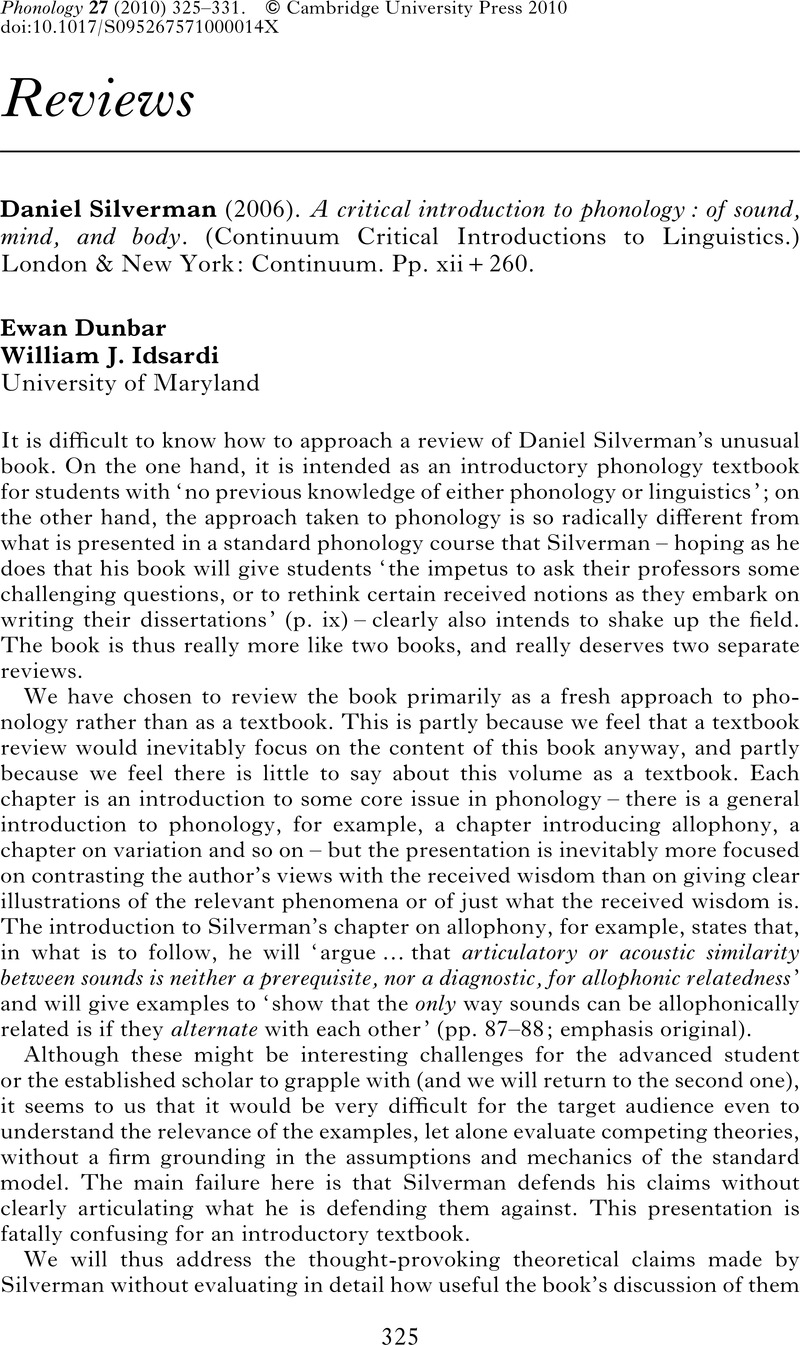Crossref Citations
This article has been cited by the following publications. This list is generated based on data provided by Crossref.
Qu, Qingqing
Damian, Markus F.
and
Kazanina, Nina
2012.
Sound-sized segments are significant for Mandarin speakers.
Proceedings of the National Academy of Sciences,
Vol. 109,
Issue. 35,
p.
14265.
Raimy, Eric
and
Cairns, Charles E.
2015.
The Segment in Phonetics and Phonology.
p.
1.
Bennett, Ryan
Tang, Kevin
and
Ajsivinac Sian, Juan
2018.
Statistical and acoustic effects on the perception of stop consonants in Kaqchikel (Mayan).
Laboratory Phonology: Journal of the Association for Laboratory Phonology,
Vol. 9,
Issue. 1,
p.
9.
Gasparri, Luca
2019.
Phonetic Segments and the Organization of Speech.
Philosophy of Science,
Vol. 86,
Issue. 2,
p.
304.


